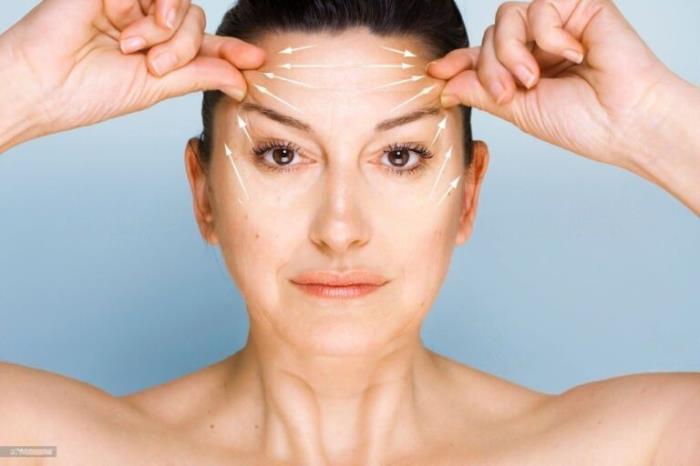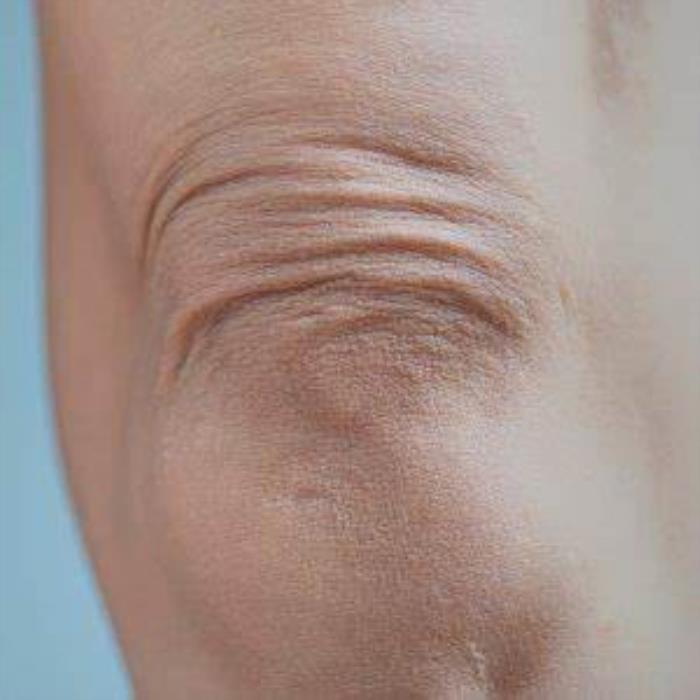Thigh skin laxity refers to the loss of firmness and elasticity in the skin on the thighs, leading to a sagging or drooping appearance. This condition can affect individuals of various ages and body types and is often a source of concern for those looking to enhance their overall appearance. Understanding the factors that contribute to skin laxity is essential for identifying effective treatment options to restore skin tightness and improve thigh contours.
Common Causes of Thigh Skin Laxity
Several factors can contribute to thigh skin laxity, including genetics, environmental influences, and lifestyle choices. Exposure to harmful UV rays, poor nutrition, and lack of hydration can exacerbate the natural aging process, leading to reduced collagen and elastin production in the skin. As a result, the skin becomes thinner and less resilient over time, making it more prone to sagging. Additionally, certain medical conditions and hormonal changes can also play a role in skin laxity.
Age-Related Skin Laxity: Why It Happens
As individuals age, the skin naturally loses its elasticity due to a decrease in collagen and elastin fibers. This process begins in the late twenties and accelerates in the thirties and beyond. In the thighs, this loss of elasticity can become particularly noticeable, leading to wrinkles and sagging skin. Additionally, factors such as reduced cellular turnover and fat loss beneath the skin contribute to a less youthful appearance in the thigh area.

The Role of Weight Fluctuations in Skin Laxity
Significant weight fluctuations can have a profound impact on skin elasticity. When a person gains weight, the skin stretches to accommodate the added fat. Conversely, when weight is lost rapidly, the skin may not contract fully, resulting in laxity and sagging. This is especially common in the thigh area, where skin may struggle to adapt after weight loss. Maintaining a stable weight through a balanced diet and regular exercise can help mitigate the risk of skin laxity.
How Pregnancy Contributes to Thigh Skin Laxity
Pregnancy can lead to various physical changes, including increased skin laxity in the thighs. As the body prepares for childbirth, hormonal changes cause the skin to stretch to accommodate the growing fetus. After delivery, some women may find that the skin does not fully return to its pre-pregnancy state, particularly in areas such as the thighs and abdomen. Factors such as multiple pregnancies or significant weight gain during pregnancy can exacerbate this laxity, making it essential for new mothers to consider skin health in their postnatal recovery plan.
Genetics: A Predisposition to Loose Skin
Genetics play a crucial role in determining skin elasticity and firmness. Individuals may inherit specific traits that influence collagen production, skin thickness, and overall skin resilience. For instance, those with a family history of loose skin or sagging may find themselves predisposed to similar conditions, particularly as they age. Understanding the genetic factors affecting skin laxity can help individuals make informed decisions about preventative care and treatment options.

The Impact of Sun Damage on Skin Elasticity
Sun damage significantly affects skin elasticity, primarily due to the breakdown of collagen and elastin fibers caused by ultraviolet (UV) radiation. Prolonged exposure to the sun can lead to photoaging, characterized by wrinkles, fine lines, and loss of skin firmness. Protecting the skin with sunscreen and limiting sun exposure can help preserve elasticity and reduce the risk of premature aging. Implementing a proper skincare regimen that includes antioxidants can also aid in combating the damaging effects of sun exposure.
Loss of Collagen and Its Effect on Thigh Skin
Collagen is essential for maintaining skin structure and elasticity. As individuals age, natural collagen production decreases, leading to the development of loose or sagging skin, particularly in areas like the thighs. This loss of collagen can result in a less toned appearance and increased skin laxity. To counteract these effects, incorporating collagen-boosting treatments or products into a skincare routine can help improve skin texture and firmness.
Lifestyle Factors That Accelerate Skin Laxity
Various lifestyle factors can accelerate skin laxity, including poor nutrition, lack of physical activity, smoking, and excessive alcohol consumption. Diets low in essential nutrients and antioxidants can hinder skin health and elasticity, while a sedentary lifestyle contributes to overall skin sagging. Making healthier lifestyle choices, such as regular exercise and a balanced diet rich in vitamins and minerals, can promote skin vitality and help prevent premature aging.

Non-Surgical Solutions for Thigh Skin Laxity
Non-surgical solutions for thigh skin laxity include various aesthetic treatments designed to tighten and rejuvenate the skin without invasive procedures. Options such as radiofrequency therapy, ultrasound treatments, and laser therapies target the underlying skin layers to stimulate collagen production and improve skin firmness. These treatments typically require little to no downtime and can be tailored to meet individual patient needs for optimal results.
Radiofrequency Therapy: Tightening Loose Skin
Radiofrequency therapy is an effective non-invasive treatment for tightening loose skin, particularly in the thigh area. This technique uses controlled heat to stimulate collagen production, leading to improved skin elasticity and firmness over time. Many patients opt for radiofrequency therapy due to its minimal downtime and the gradual, natural-looking results it offers. Multiple sessions may be required to achieve the desired outcome, with many patients noticing significant improvements within a few weeks.
The Benefits of Ultrasound for Skin Tightening
Ultrasound technology is another innovative solution for skin tightening, utilizing sound waves to penetrate deep into the skin layers. This treatment promotes collagen remodeling and enhances skin firmness, particularly beneficial for areas affected by laxity, such as the thighs. Ultrasound treatments are generally painless and require no downtime, making them a popular choice for individuals seeking non-surgical options to enhance their skin appearance.
Laser Treatments for Addressing Thigh Skin Laxity
Laser treatments effectively address thigh skin laxity by targeting the dermis and stimulating collagen production through focused light energy. These treatments can improve skin texture and firmness while reducing the appearance of fine lines and wrinkles. Different types of lasers, including fractional and non-fractional lasers, are available, allowing practitioners to customize the approach based on individual skin concerns and goals for optimal results.
Injectable Treatments: How They Help Tighten Skin
Injectable treatments, such as dermal fillers and neuromodulators, can also play a role in tightening and rejuvenating the skin on the thighs. Fillers can restore volume and smooth out fine lines, while neuromodulators temporarily relax muscles to improve skin appearance. These treatments can be particularly beneficial for individuals seeking quick results with minimal downtime, making them an attractive option for enhancing thigh skin elasticity.
Surgical Solutions for Severe Skin Laxity
For individuals with severe skin laxity on the thighs, surgical options may be necessary to achieve significant improvements. Procedures such as thigh lifts can remove excess skin and tighten the remaining skin for a more contoured appearance. While surgical solutions often provide dramatic results, they also come with longer recovery times and potential risks. Consulting with a qualified surgeon can help determine the most appropriate course of action based on individual needs and desired outcomes.
Maintaining Skin Elasticity Through Diet and Exercise
Maintaining skin elasticity is crucial for overall skin health, especially in areas prone to laxity, such as the thighs. A balanced diet rich in vitamins C and E, omega-3 fatty acids, and antioxidants can support collagen production and protect the skin from oxidative stress. Regular exercise also plays a vital role, as it enhances blood circulation and encourages the delivery of essential nutrients to the skin. Incorporating strength training can further improve muscle tone, providing additional support to the skin and promoting a firmer appearance.
Combining Treatments for Optimal Results
Combining various treatments can enhance outcomes for individuals seeking to address thigh skin laxity effectively. For instance, pairing non-surgical options like radiofrequency therapy with laser treatments can target different layers of the skin, maximizing collagen stimulation and improving overall skin texture. Additionally, integrating injectable treatments may provide immediate volumizing effects, complementing the long-term benefits of other procedures. A personalized treatment plan developed by a qualified professional can help individuals achieve optimal results tailored to their specific skin concerns.
Post-Treatment Care for Long-Lasting Results
Proper post-treatment care is essential for ensuring long-lasting results following thigh skin laxity treatments. Patients are typically advised to follow a skincare regimen that includes gentle cleansing, moisturizing, and sun protection to promote healing and prevent complications. Staying hydrated and maintaining a balanced diet can also aid in recovery. It's crucial to follow any specific aftercare instructions provided by the practitioner to optimize outcomes and enhance the longevity of the results achieved through treatments.
Success Stories: Solving Thigh Skin Laxity
Many individuals have experienced transformative results from addressing thigh skin laxity through various treatment options. Success stories often highlight the significant improvements in skin texture, firmness, and overall confidence. Patients report feeling more comfortable in their skin, leading to a more active lifestyle and enhanced self-esteem. These testimonials serve as inspiring examples of how effective treatments can resolve skin laxity issues, motivating others to explore their options for achieving similar results.
Exploring the Different Techniques for Thigh Lift Surgery
Discover the various surgical techniques utilized in thigh lift procedures, including medial and lateral thigh lifts. Understanding these options can help you choose the right method tailored to your individual needs, ensuring optimal results and satisfaction with your body contouring journey.
The Impact of Thigh Lift Surgery on Physical Mobility
Learn about how thigh lift surgery can enhance physical mobility and comfort. By eliminating excess skin and fat, many patients experience improved movement and the ability to engage in various physical activities, leading to a more active and fulfilling lifestyle post-surgery.
Best Thigh Lift Surgery in India
The Best Thigh Lift Surgery in India offers patients effective body contouring solutions, using advanced surgical techniques to remove excess skin and improve the appearance of the thighs, customized to individual body goals.
Best Thigh Lift Hospitals in India
The Best Thigh Lift Hospitals in India are renowned for their cutting-edge facilities and experienced teams, ensuring that patients receive top-quality care before, during, and after surgery for optimal results.
Thigh Lift Surgery Cost in India
The Thigh Lift Surgery Cost in India is competitive, offering patients affordable options while ensuring the highest standards of care at leading hospitals, with a transparent pricing structure.
Best Thigh Lift Surgeons in India
The Best Thigh Lift Surgeons in India are highly skilled in performing the surgery, focusing on personalized care, precision, and long-term patient satisfaction for body contouring procedures.
FAQs About Thigh Skin Laxity and Its Treatments
What causes thigh skin laxity?
Thigh skin laxity can result from factors such as aging, significant weight loss, and genetic predisposition. Loss of collagen and elastin, as well as lifestyle choices, also contribute to this condition.
What are the best non-surgical treatments for thigh skin laxity?
Popular non-surgical treatments include radiofrequency therapy, ultrasound treatments, and laser therapies. These options stimulate collagen production and enhance skin firmness without invasive procedures.
How long do the results of thigh skin laxity treatments last?
Results vary depending on the treatment type, individual skin condition, and aftercare. Many non-surgical treatments provide gradual improvements that can last several months to a year with proper maintenance.
Can I combine treatments for better results?
Yes, combining treatments can often yield optimal results. A personalized treatment plan may include various approaches, such as lasers and injectables, to address multiple aspects of skin laxity.
Is there any downtime associated with thigh skin laxity treatments?
Downtime varies depending on the treatment chosen. Non-surgical options typically involve little to no downtime, allowing patients to resume normal activities shortly after treatment.